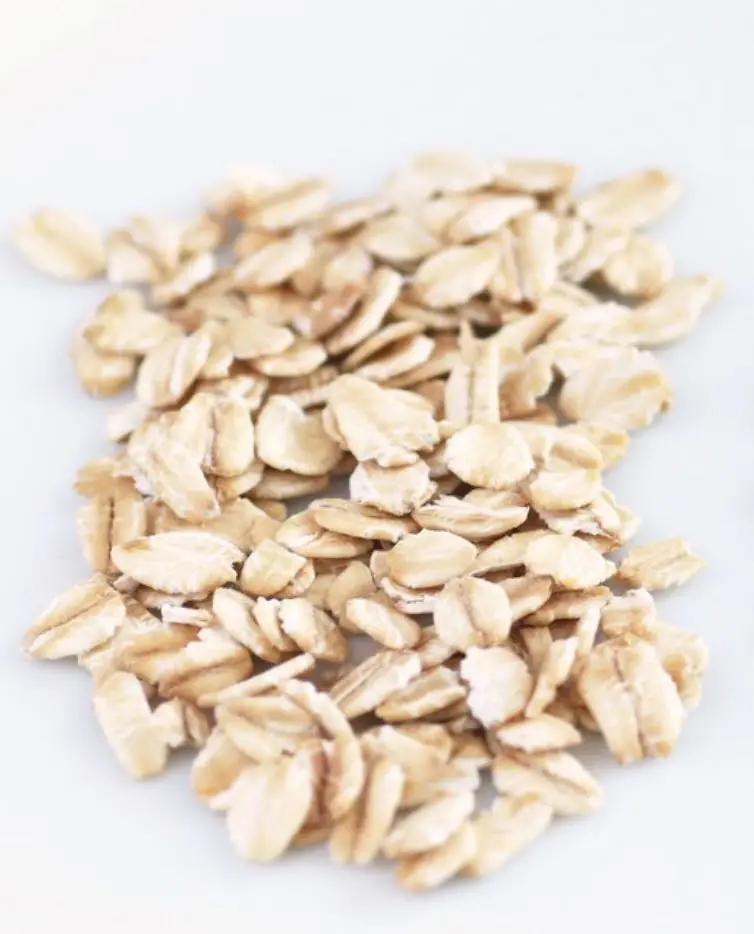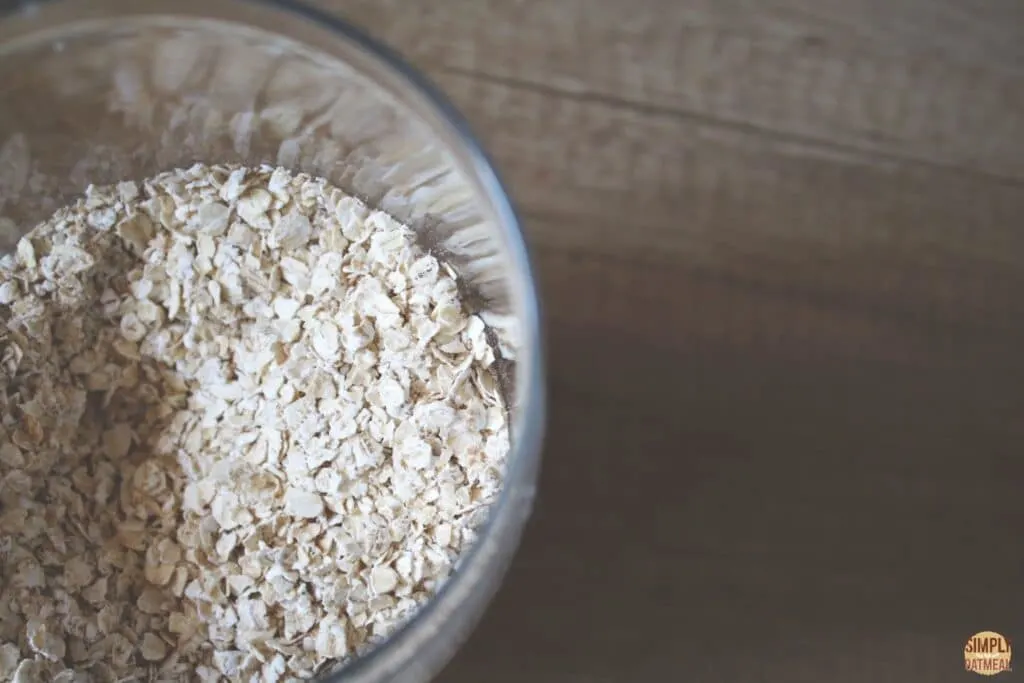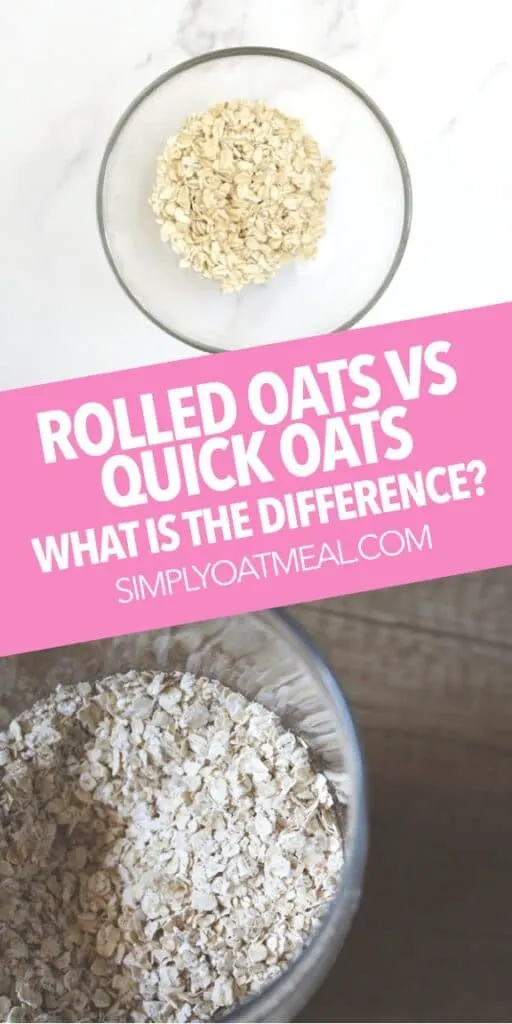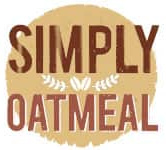Cereal grain oats undergo different processing methods that result in differences between the final product. So what is the difference between rolled oats and quick oats?
Rolled oats and quick oats are made using the same process; whole grain oats are hulled, cut, steamed and rolled. The major difference between the two is how thick or thin the oats are rolled.
Do rolled oats and quick oats come from the same whole grain source? Steel cut, rolled oats and quick oats are the most common form of manufactured oats, however they are not the only types.
Oats can be hulled, cut, rolled and ground, which produce a variety of different final products that come from the same whole grain. From oatmeal cookies to oatmeal muffins and overnight oats, there are many types of oats and the uses for whole grain oats are endless.
This article sets out to discuss the difference between rolled oats vs quick oats.
What are rolled oats and quick oats?
Whole grain oats are covered with an indigestible outer shell called a hull or husk. The processing of whole grain oats begins with the harvesting.
The oat kernel or oat groats are removed from the tough outer casing to expose the seed of the plant. Oat groats are edible, and generally used in hot breakfast cereal, soups, stews and pilafs.
However, the differences between rolled oats and quick oats is the result of a very slight variation during the processing of the oat groat.
Rolled Oats

Rolled oats are commonly referred to as regular or old-fashioned oats. They are the most common form of processed oats in the marketplace.
Rolled oats are made from oat groats that have been steamed and rolled flat with the help of large rolling pins. Flattened or rolled oats expose a larger surface area which makes them cook much faster.
The steaming process helps the oats to roll flat without cracking. In addition, the steam stabilizes the natural oils within the oats and further extends the shelf life of the grain.
Rolled oats cook much faster than steel cut oats because they have been partially cooked with steam and flattened to create a larger surface area. Furthermore, the taste is mild because the steam diluted the flavor.
A portion of rolled oats can be soaked overnight or cooked in about 10 minutes. Rolled oats are also used in a variety of preparation like bars, biscuits, breads, cookies, cakes, granolas and muffins, the options are endless.
Related: Best Rolled Oats
Quick Oats

Quick-cooking oats or quick oats are similar to rolled oats, but the main difference is that they are rolled much thinner. The reduced thickness decreases the cooking time to just a few minutes, which makes them easier to prepare.
The taste is even more mild that rolled oats, but the texture of cooked quick oats is noticeably mushier than old fashioned oats.
Quick oats are not the same as instant oats, which are a fine ground powder that cooks up instantly when exposed to boiling hot water.
Both rolled oats and quick oats follow the same production steps. However, the main difference is the thickness of the rolled or flattened oats.
Even though both types of oats are steamed first and then rolled, rolled oats are noticeable thicker than quick oats. As a result, quick oats cook faster and are slightly mushier than rolled oats.
Health Benefits of Oats
Oats are a nutritious whole grain, and eating oats offers many health benefits.
The fiber rich food contains both soluble and insoluble fiber, and is a source of plant based protein, vitamins, minerals and antioxidants.
Furthermore, oats are gluten free, which makes them a good alternative for anybody with celiac disease gluten sensitivity or gluten intolerance.
Even though oats are naturally gluten free, it is recommended to use certified varieties to avoid cross contamination of the oats during the harvesting, production or packaging.
Only a ½ cup (40 grams) of dry, rolled oats contains [1]:
- Calories: 154 or 7% of the RDI
- Protein: 6 g or 10% of the RDI
- Fat: 3 g or 4% of the RDI
- Carbs: 28 g or 9% of the RDI
- Fiber: 4 g or 16% of the RDI
- Thiamin (B1): .2 mg or 13% of the RDI
- Iron: 1.7 mg or 10% of the RDI
- Magnesium: 56 mg or 14% of the RDI
- Phosphorus: 166 mg or 17% of the RDI
- Zinc: 1.5 mg or 10% of the RDI
- Copper: .2 mg or 8% of the RDI
- Manganese: 1.5 mg or 74% of the RDI
- Selenium: 11.7 mg or 17% of the RDI
Oats also contain beneficial compounds such as antioxidants and the soluble fiber beta-glucan, which also has its own set of health benefits. [2]
The beta-glucan is oats has been used to lower both “bad” LDL and total cholesterol levels within the blood stream. As a result, this may help support heart health and reduce the risks of heart attack, stroke and other issues that result from heart disease.
A recent study demonstrated a 8% reduction of total cholesterol and an 11% decrease in “bad” LDL cholesterol. 80 people with high cholesterol consumed 70 grams of oats per day for 28 days straight. [3]
In addition, beta-glucan in oats has shown the ability to slow the process of emptying the stomach. The slower rate of digestion increases the feeling of fullness.
The altered state stabilizes the blood sugar levels within the blood stream and also benefits the acceleration of weight loss. [4]
Oats are highly nutritious and wholesome food that has exhibited a number of health benefits. Eating oats on a regular basis may help lower LDL and total cholesterol levels, decrease blood sugar availability and also encourage a feeling of fullness that supports weight loss.
Are rolled oats better for you than quick oats?
Use the chart to compare the nutritional values between 56 grams (2 ounces) of rolled and quick oats.
The nutrition values of rolled oats and quick oats show marginal differences between them.
Different varieties of oats can make it difficult for consumers to determine which option is the healthiest.
As you can see, the nutritional values of the two oat types is marginally different.
At this point, it is important to mention that growing conditions, soil content and water quality can impact the nutritional value of the grain. [5]
In order to accurately confirm and major differences between rolled oats and quick oats, a proper study would have to comprise statistical results.
It is noteworthy to mention that available data suggests only a slight difference in the nutrition levels between rolled oats and quick oats.
Which Type Of Oats Should You Choose?
Both oat types are extremely nutritious whole grains. Rolled oats and quick oats have the same amount of fiber and contain a low glycemic index.
Oats are an excellent source of dietary fiber, plant-based protein, vitamins, minerals, and beneficial compounds like beta-glucan and antioxidants such as avenanthramides.
When choosing the right oatmeal for you, it’s important to consider factors that best fit your lifestyle.
Since both types taste fairly mild, texture and cooking time are the two most prominent factors when making this decision. Rolled oats have more texture, while quick oats cook much faster and have a mushier result.
Can I substitute quick oats for rolled oats in baking?
When baking, you can substitute quick oats for rolled oats. A thin oat is important because baked goods need to fully cook. Rolled oats will add a bit more chewiness to the finished texture, while quick oats tend to blend into the doughiness.
Rolled oats have more whole shaped pieces compared to quick oats, which tend to have many more fragmented pieces and broken bits. Quick oats are much thinner than rolled oats, which results in a faster cook time and a mushier texture.
Both rolled oats and quick oats are equally nutritious, and the main difference between the two lies in the thickness of the oat. Both oats are steamed and then rolled flat, but quick oats are rolled much thinner than rolled oats.
Rolled oats will result in more texture and chewiness inside the baked goods. Quick oats will work, but the oat pieces will be smaller and doughier with less whole shaped oats inside the crumb.


SX
Thursday 3rd of November 2022
The only source who's knowing what it's talking about. Thank you
Joshua
Thursday 3rd of November 2022
Thank you
RB
Saturday 16th of April 2022
Helpful info — thank you!